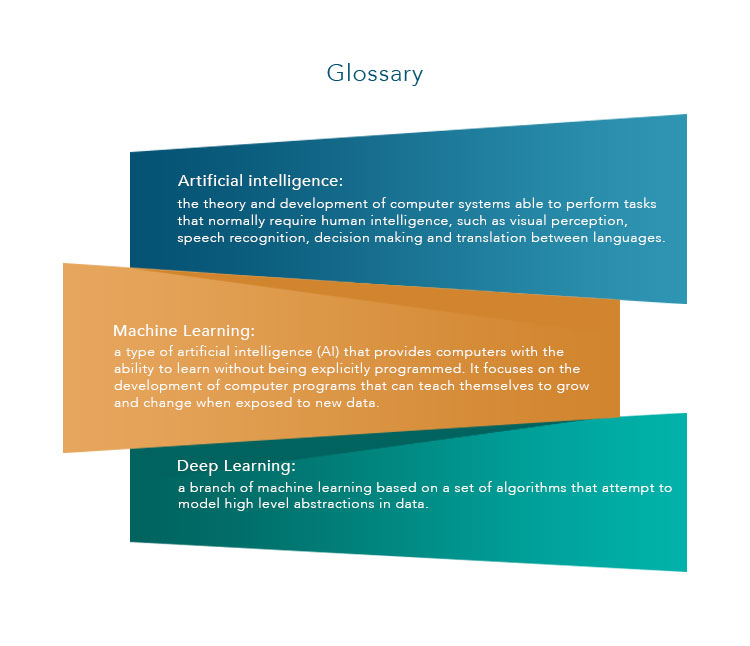It’s no secret that the Internet of Things (IoT) has exploded. Just last year, experts pegged the market at 15 billion smart devices—that’s 26 objects for every person—and expect it will rise to more than 200 billion by 2020.
While that’s a lot of wearables, fitness trackers and smart home devices, these use cases are not the majority: The IoT is most dominant in the B2B space—specifically in industrial use cases. But when we think of the IoT at its most basic instance (i.e., everyday devices automatically exchanging information over a network), we can also see how it stands to revolutionize marketing.
“There’s an enormous amount of the IoT devices across businesses that help us learn more about customers, how they’re using products and services and how we can best reach them by becoming their trusted resource or advisor,” says Tamara McCleary, CEO of Thulium.co.
These devices run the gamut—everything from energy meters to embedded sensors in retail locations to track traffic patterns, for example. All the data these “things” produce has done more for marketers than just strengthen brands’ relationships with customers, though: It has elevated marketers’ seat at the table and broken down silos across the business. These relationships, McCleary says, are key to the success of all marketers.
“It’s the quality of our relationships that determines success, personally and professionally,” she says. “The IoT is just a tool to help us human beings understand the relationship between things and people, and people and people.”
Three of the most important relationships that the IoT helps B2B marketers fortify include those with customers, the C-suite and cross-functional teams.
Improving Relationships with Customers
The IoT is all about data—valuable pieces of information that help marketers tap into greater personalization, capitalize on micro-moments and engage in real time, McCleary says.
“This is where the gold is: We get deeper insights into the customer’s use of the product or service that we didn’t have before,” she says. “This gives us an incredible competitive advantage and the unparalleled opportunity to improve the customer relationship as well as marketing and sales results.”
Take, for example, the IoT’s role in the telecom industry. “A telecom provider can preemptively take action to save a customer relationship by using the information it receives to determine the level of customer satisfaction,” McCleary says.
This might mean recognizing patterns and trends in mobile phone usage in certain locations to pinpoint service outages. By analyzing this data, telecom service providers can identify network configuration changes that will enhance service quality. Another instance: using the IoT data to swiftly identify and rectify real-time identification and investigate problems with certain device types.
“The data collected from the IoT enables businesses to see what’s actually going on with customers versus relying on educated guesses from outside sources,” McCleary says. “For any enterprise company, increasing customer service and satisfaction is a competitive edge, especially in destination digital.”
Now, thanks to the IoT, marketers can not only track customers from the moment they think about a purchase, but through to the piece of marketing that leads them to complete a sale and how they use the product after they purchase it, she says.
These insights were once a blind spot, McCleary says. Before digital and the IoT, the only information marketers could consistently rely on was what customers would volunteer to share with them. This was potentially misleading for marketers because, quite often, customer intentions never came to fruition. This definitely fell short of the unshakable foundation so many decision makers wanted before making a move.
However, the IoT gives marketers instant insight into product status, opening up many more opportunities to satisfy customers. Bearings manufacturer Schaeffler, for example, has built sensors into their products to help continuously monitor the performance of their bearings, which has allowed them to not only track the actual usage, but to inform customers when their product is working outside of specification, warranting refurbishment or replacement.
“Due to the IoT, we can now anticipate customer needs and wants,” McCleary says. “The data shared between connected things is offering us crucial data and insights for providing a superior customer experience.”
Validating Marketing in the C-suite
Traditionally, marketers have not held an influential seat at the table, McCleary says. That lack of power stemmed from difficulty in proving value—specifically how marketing efforts contributed to the bottom line, she says.
In television or radio advertising, for example, the only information marketers pocketed was an ambiguous flux in sales after an ad ran, she says. There was no data that directly correlated with advanced customer analytics or hard revenue numbers to prove marketing’s effort.
Now, marketers enjoy a meld of data that’s more complex and valuable, where the IoT data universe includes artificial intelligence, machine learning and deep learning, McCleary says. Alone, the raw data points that the IoT collects are relatively useless, but pairing them with an intelligence that can process it rapidly and learn is a recipe for success, she says.

“Imagine the impact in the year 2020 where global computing interconnectivity touches every device. That's billions of machines that can learn and talk to one another without human intervention,” McCleary says. “This is the meaning of the IoT paired with AI, machine learning and deep learning. It doesn't matter if we think we are ready or not. It's already happening.”
The convergence of the IoT, big data and analytics has challenged marketing’s traditional characterization as a soft science, legitimizing their seat at the table.
“We’re able to present irrefutable data and analytics to correlate and connect the dots between marketing initiatives and activation, and directly move the needle on the bottom line, substantiating marketing’s initiatives,” McCleary says.
One way this happens: The IoT makes CRM smarter by feeding buyer data into the system as-it-happens, where it then can be analyzed to determine where the prospect or customer is in their purchasing journey. This real-time data provides teams with the information they need to serve up the most relevant content and offers and drive conversions.
Improving Cross-Functional Relationships
In siloed workplaces, efficiency and morale are often low, McCleary says. But as the IoT permeates businesses, more teams are banding together to harness its power and work toward common goals. This collaborative mindset has strengthened marketing’s relationships with key stakeholders throughout the business.
The most obvious relationship, McCleary says, is between IT and marketing. With millions of potential data points, the CIO and CMO now work closer together than ever to identify, collect and interconnect the right data to help marketers better attract, convert and retain customers.
But, according to a report from McKinsey, it doesn’t end there. The IoT challenges other notions of organizational responsibilities and relationships. For example, department heads—including the CMO and other executives—now need to be receptive to interconnecting their systems. This often requires companies to train employees in new skills so the organization can become more analytically rigorous and data-driven.
Beyond department heads, B2B marketers benefit from closer relationships with sales. Working in concert with sales means marketers have access to data disclosing how, where and why products are purchased and used, which helps marketing better tailor their efforts toward specific clients. A closer working relationship extends to customer service, too, McCleary says.
“Customer service needs to be brought into the fold, sharing the same deeper level of understanding of their customers. It’s imperative for all departments to communicate a unified story in alignment with the company’s overall mission and vision,” she says.
All this is central to the creation and oversight of a new culture of collaboration.
“Company culture can make or break an operation. A house divided will fall, so in this age of digital transformation, there’s only room for collaboration,” McCleary says. “Think of it this way: These teams are your customers, too, and you should be building and embracing these relationships just as you would an external customer. The smoother things run internally, the more work you can get done by enlisting the help of your allies. This helps build a much more functional organism.”
The IoT, though still in its infancy, has already impacted the way B2B marketers operate, strengthening their relationships with key stakeholders: with customers, the C-suite and cross-functional teams. Looking toward the future, McCleary says, marketers can expect the IoT to bring even more opportunity.
“Business success has always been about relationships, from the corner butcher shop knowing you like your bacon cut thick to the enterprise knowing your equipment needs are changing and you’re going to be making a large purchase in the next six months,” she says. “These are exciting times for marketers. The IoT is just a tool to help us human beings understand the relationship between things and people.”

